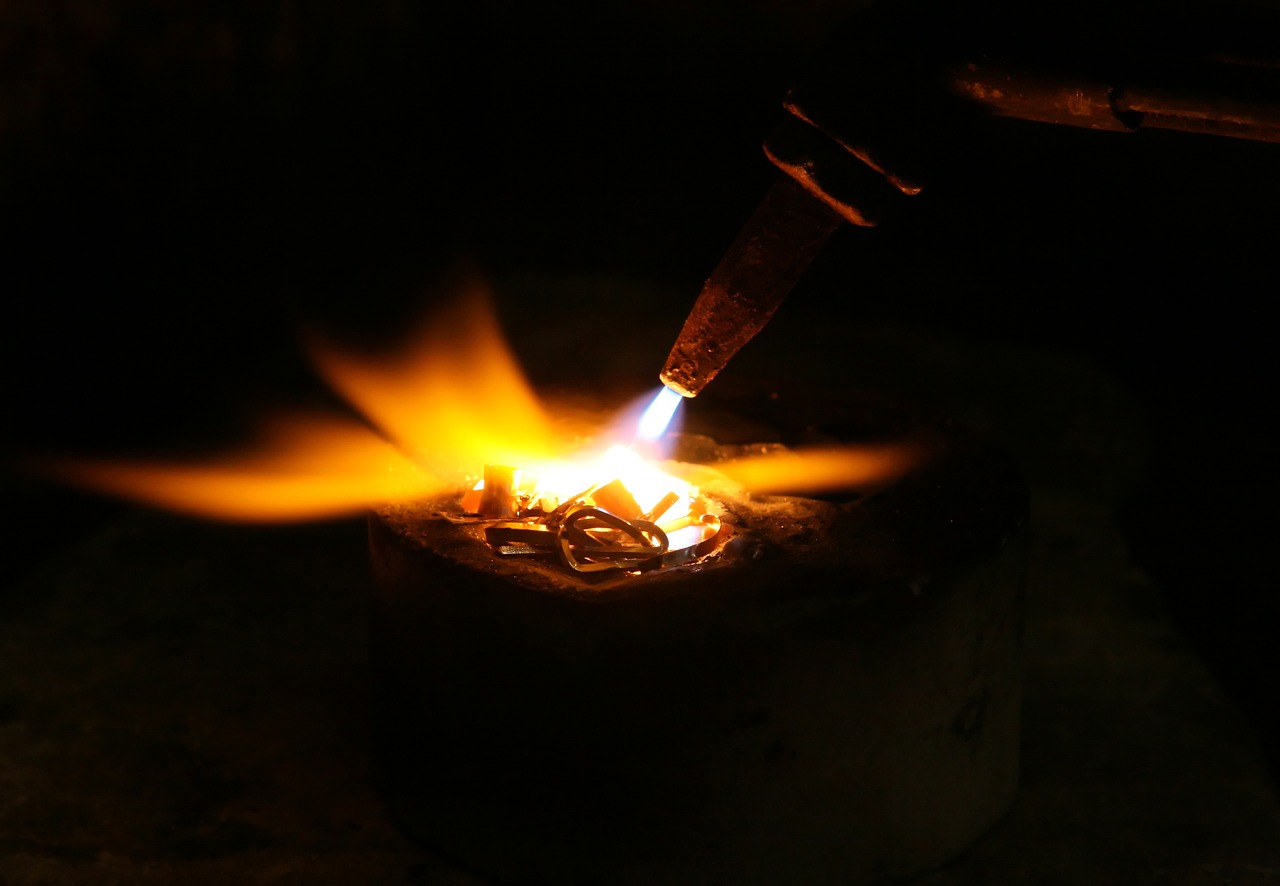Material processing is the step that transforms industrial materials from a raw material state into finished parts or products.
The importance of materials processing to the discipline of materials science and engineering is described.
Industrial Engineering materials are defined as those used in the manufacture of “hard” goods, such as more or less durable machines and equipment produced for industry and consumers, in contrast to disposable “soft” goods, including chemicals, foodstuffs, pharmaceuticals, and apparel.
Materials processing by hand is as old as civilisation. Mechanisation began with the Industrial Revolution of the 18th century, and in the early 19th century, the basic machines for forming, shaping, and cutting were developed, principally in England. Since then, materials-processing methods, techniques, and machinery have grown in variety and number.
Also Read: Sanitary Engineering
The cycle of manufacturing processes that converts materials into parts and products starts immediately after the raw materials are either extracted from minerals or produced from basic chemicals or natural substances.
Metallic raw materials are usually made in two steps. First, the crude ore is processed to increase the concentration of the desired metal, a process known as beneficiation.
Typical beneficiation processes include crushing, roasting, magnetic separation, flotation, and leaching. Second, additional methods, such as smelting and alloying, are used to produce the metal, which is then fabricated into parts that are eventually assembled into a product.
In the case of ceramic materials, natural clay is mixed and blended with various silicates to produce the raw material. Plastic resins are produced by chemical methods in powder, pellet, putty, or liquid form.
Synthetic rubber is also produced by chemical techniques, being made in various forms, such as slabs, sheeting, crepe, and foam, for use in fabricating finished parts.
The processes used to convert raw materials into finished products perform one or both of two primary functions: first, they shape the material into the desired form, and, second, they alter or improve the material’s properties.
Forming and shaping processes may be classified into two broad types: those performed on the material in a liquid state and those performed on the material in a solid or plastic condition.
The processing of materials in liquid form is commonly known as casting when it involves metals, glass, and ceramics; it is called moulding when applied to plastics and some other nonmetallic materials. Most casting and moulding processes involve four significant steps:
- making an accurate pattern of the part,
- making a mould from the pattern,
- introducing the liquid into the mould, and
- removing the hardened part from the mould. A finishing operation is sometimes needed.
Materials in their solid state are formed into desired shapes by applying force or pressure. The material to be processed can be in a relatively complex and stable condition, or in forms such as bars, sheets, pellets, or powders, or it can be in a soft, plastic, or putty-like form.
Solid materials can be shaped either hot or cold. Processing of metals in the solid state can be divided into two primary stages: first, the raw material in the form of large ingots or billets is hot-worked, usually by rolling, forging, or extrusion, into smaller shapes and sizes; second, these shapes are processed into final parts and products by one or smaller-scale hot or cold forming processes.
Also Read: Corrosion in Reinforced Concrete: Causes, Prevention and More
After the material is formed, it is usually further altered. In materials processing, a “removal” process eliminates portions of a piece or body of material to achieve the desired shape.
Although removal processes are applied to most types of materials, they are most widely used on metallic materials. Material can be removed from a workpiece by either mechanical or nonmechanical means.
There are several metal-cutting processes. In almost all cases, machining involves forcing a cutting tool against the material to be shaped.
The tool, which is more complicated than the material to cut, removes the unwanted material in the form of chips. Thus, the elements of machining are a cutting device, a means for holding and positioning the workpiece, and usually a lubricant (or cutting oil). There are four basic non-cutting removal processes:
- In chemical milling, the metal is removed through an etching reaction of chemical solutions on the metal; although typically applied to metals, it can also be used on plastics and glass.
- Electrochemical machining utilises the principle of metal plating in reverse, where the workpiece, rather than being built up by the plating process, is worn away in a controlled manner by the action of the electrical current.
- Electrical discharge machining and grinding erode or cut the metal by high-energy sparks or electrical discharges. And
- Laser machining cuts metallic or refractory materials with an intense beam of light from a laser.
Another further alteration may be “joining,” the process of permanently, sometimes only temporarily, bonding or attaching materials.
The term used here includes welding, brazing, soldering, adhesive, and chemical bonding. In most joining processes, a bond between two pieces of material is produced by the application of one or a combination of three kinds of energy: thermal, chemical, or mechanical. A bonding or filler material, the same as or different from the materials being joined, may or may not be used.

Hot or cold treatments, mechanical operations, and exposure to some forms of radiation can further alter the properties of materials.
A change in the microscopic structure of the material typically leads to property modification. Both heat-treating, which involves temperatures above room temperature, and cold-treating, which involves temperatures below room temperature, are included in this category.
Thermal treatment is a process in which the temperature of a material is raised or lowered to alter its properties.
Most thermal-treating processes are based on time-temperature cycles that consist of three steps: heating, holding at a specific temperature, and cooling. Although some thermal treatments apply to most families of materials, they are most widely used on metals.
Finally, “finishing” processes may be employed to modify the surfaces of materials to protect the material against deterioration by corrosion, oxidation, mechanical wear, or deformation; to provide special surface characteristics such as reflectivity, electrical conductivity, or insulation, or bearing properties; or to give the material special decorative effects.
There are two broad groups of finishing processes: those in which a coating, typically of a different material, is applied to the surface, and those in which the surface of the material is altered by chemical action, heat, or mechanical force.
The first group includes metallic coating, such as electroplating; organic finishing, such as painting; and porcelain enamelling.
Also Read: Best CAD Software For Architects | All You Need to Know
TYPES OF MATERIAL PROCESSING
The processes used for the manufacture of the desired product generally provide two primary functions: the formation or alteration of materials.
The formation of parts or products is usually achieved by moulding, casting, or the application of pressure. The physical state or composition of commodities and products can be altered by various means, including chemical, mechanical, and thermal operations.
Chemical engineering methods are applied to modify the cellular structure or molecular properties of materials on a microscopic level.
Thermal processes, which involve the addition or removal of heat, are used to alter a range of materials, particularly metals.
Mechanical operations employ specialised equipment in the transformation of solid matter. Additional processing, including bonding, cutting, and finishing, may be necessary to provide finished products.
These processes can be applied to a variety of materials and applications, including:
- Adhesives and Sealants
- Agricultural Chemicals
- Biomaterials
- Ceramics
- Composites
- Electronic Materials
- Glass
- Metals and Alloys
- Nanomaterials
- Paints, Inks, and Coatings
- Personal Care Products
- Pharmaceuticals
- Plastics and Polymers
FAQ
What is Materials processing?
It is the step that transforms industrial materials from a raw material state into finished parts or products. The importance of materials processing to the discipline of materials science and engineering is described.
What is the process involved in casting and moulding Plastics?
1. making an accurate pattern of the part,
2. making a mould from the pattern,
3. introducing the liquid into the mould, and
4. removing the hardened part from the mould
We hope this article has helped you learn about Material Processing, including its definition and Examples. You may also want to learn about Best Gifts For Civil Engineers and Architects in 2022, The Communication Skills: All Engineers Need To Know, Tendering Process: Advantages and Types, All You Need to Know, and The Contractor | Types, Responsibilities, and Conditions You Need To Know.
Join the conversation by replying on Bluesky.
That’s all.
If you liked this article, please join Website For Engineers on Twitter, Facebook, TrueSocial, Pinterest, BlueSky, and in our WhatsApp channels.


